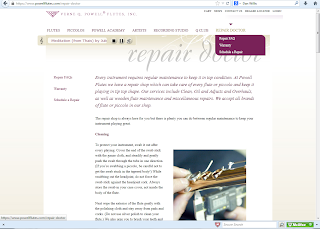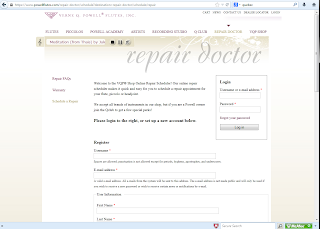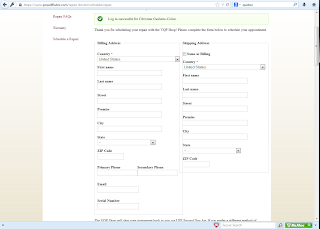 |
| Powell Custom Piccolo |
If you’ve been playing piccolo and find that your low
register has become weak, what could be the culprit?
Perhaps a leak?
Well, yes, that is often the case when notes
suddenly do not speak or become difficult to play.
On the piccolo, a leak could certainly be the
issue in this scenario, but it might not be coming from where you think it is…
Here is something to try – take the headjoint off the
piccolo, make sure the tenon cork is well greased, and then put the headjoint
back on. Pull the headjoint quickly straight off the instrument. You may give it a slight twist to assist the process. Listen for a pop as it comes off the body. Do you hear it? If you don’t hear a pop, and you are
struggling with the low register, you may not have proper suction between the
headjoint and body. This means that air
is leaking from this spot! Corks can
seal air, and there is a cork on your piccolo body tenon. However, it is more likely that the air is
leaking from an improper seal of the metal-to-metal connection. This connection, specifically, is between the
inner sleeve of the headjoint and the metal ring on the top of the body tenon
(which the inner sleeve fits into when the piccolo is assembled). Even if the cork is sealing, and there is no static leak to the outside
of the instrument, a loose metal-to-metal fit causes an internal,
dynamic leak. This internal leak saps acoustic energy from the
vibrating air column of the bore.
Is this something that can be remedied?
Of course!
In fact, our wood specialist, Tim Burnett, assures us that it is quite
an easy fix.
However, this should only
be done by a certified repair technician – so don’t try this at home!
The solution in the case of a headjoint that
fails the “pop test” is to expand the inner sleeve.
Over time, it can shrink simply from the basic
wear and tear of assembling the piccolo.
To expand the inner sleeve, the headjoint is placed on an arbor, and the
inner sleeve is expanded ever so slightly.
It’s very similar to the headjoint fitting procedure on a flute
headjoint that is too loose, which we visited in the previous post at
http://www.repairmyflute.com/2012/09/headjoint-fit.html.
As is the case with many repair issues, a leak in the
metal-to-metal connection of the body and headjoint may not be visible to the
eye.
However, it is common, easily
repaired, and quite detectable through the “pop test!” Give it a try –
hopefully your piccolo is popping!
 |
| Red arrow points to the inner sleeve. Yellow arrow points to where the inner sleeve goes into the tenon. |
 |
| Putting the headjoint on for the "pop test." |
 |
| Headjoint is on. |
 |
| Pulling the headjoint off (with a slight twist). |
 |
| And... |
 |
| Pop! It's off, and the air seal is good! |

























